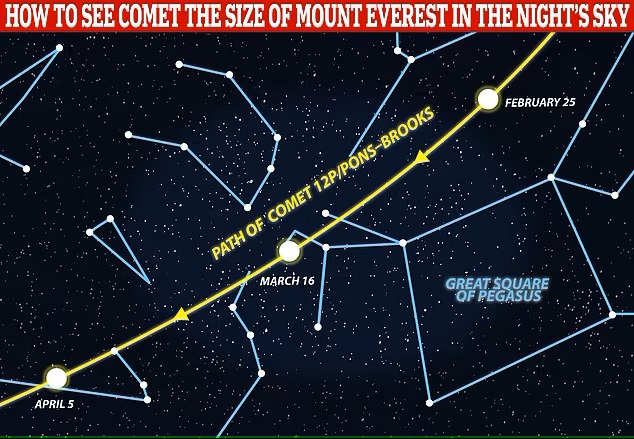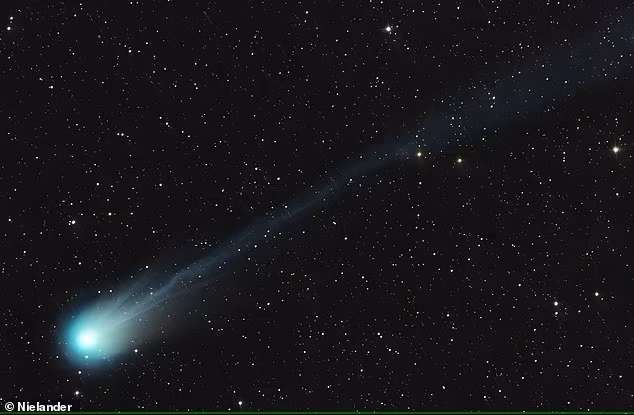A comet larger than Everest could become visible to the naked eye in the coming weeks

This month, astronomy enthusiasts have a unique opportunity to see a comet larger than Mount Everest. Officially, this comet is known as 12P/Pons-Brooks. The comet was nicknamed "The Devil's Comet" last year after the haze that surrounded it formed a horned shape.
Here's What We Know
Astronomy enthusiasts are already taking pictures of the comet with specialised telescopes, but it should soon be visible to the naked eye. To see Comet 12P/Pons-Brooks, you should look west into the night sky and look for the Grand Square of Pegasus - four stars of almost equal brightness. Over the next few weeks, the comet moves from the Big Square of Pegasus to Aries, which forms a loose V shape.

The comet makes a revolution around the sun every 71 years and is visible from Earth only once during that period, making its observation a once-in-a-lifetime event. Pons-Brooks will come within 116.8 million km of the sun on 21 April. It will then make a close approach to Earth at a distance of 232 million km on 2 June. However, for residents of the northern hemisphere, the best time to observe will be at the end of March.
After the maximum approach to us, the space object will be gravitationally thrown back to the outer part of the solar system and will not return until 2095.

Believed to have a nucleus about 30 kilometres in diameter, it is classified as a cryovolcanic comet, meaning it erupts dust, gas and ice as pressure builds up inside it as it heats up. One of the outbursts that occurred after this pressure caused it to become a hundred times brighter last year and continued to get brighter in the days that followed.
While it is difficult to predict what the comet will look like and how bright it will become, the public should pay attention to what looks like a "misshapen dirty snowball."
Go Deeper:
Comet 12P/Pons-Brooks, also known as Comet Pons-Brooks, was discovered by French astronomer Jean Louis Pons in 1812 and American astronomer William Robert Brooks in 1883. This periodic comet has an orbital period of about 71 years. Its orbit brings it to Earth about once every 6-7 years. Comet 12P/Ponce-Brookes is characterised by bright eruptions of gas and dust as it approaches the Sun, making it an interesting object for astronomical observations. Studying this comet helps expand our understanding of the origin and evolution of comets in the solar system.
Source: DailyMail